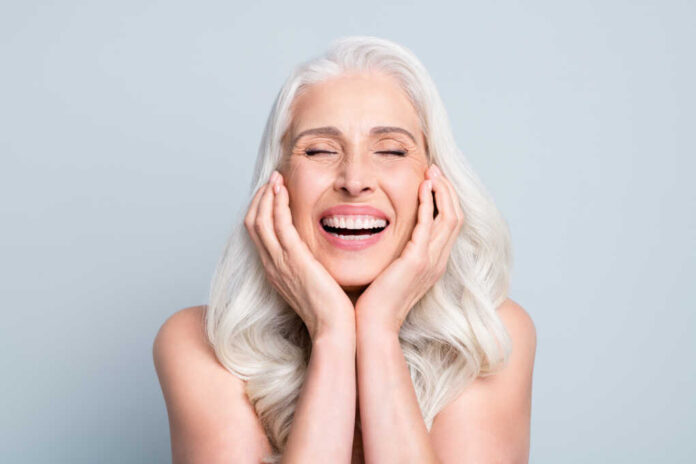
Embracing gray hair has become a powerful statement of personal identity and self-acceptance, with celebrities, models, and everyday women sharing their journeys toward natural beauty beyond societal expectations.
At a Glance
- Going gray is increasingly viewed as an empowering personal journey rather than something to hide, with role models like JoAni Johnson and Andie MacDowell leading the way
- Expert advice suggests transitioning strategies including hair cuts, blending techniques, and specialized products to make the process more graceful
- Women report feeling liberated and more authentic after embracing their natural gray, with many creating supportive communities
- The movement toward gray acceptance reflects broader cultural shifts in how aging and natural beauty are perceived
Celebrity Trailblazers Leading the Gray Revolution
Actress Andie MacDowell made headlines when she embraced her natural gray hair during the pandemic. Her decision wasn’t impulsive but thoughtful, finding inspiration in men with silver hair who were considered attractive and distinguished. MacDowell discovered that her natural color actually enhanced her uniqueness and sense of personal power rather than diminishing it. For women considering a similar path, she suggests cutting hair shorter to avoid the harsh contrast of root dyeing and recommends L’Oréal products specifically designed for conditioning and adding shine to gray hair.
Television has also played a role in normalizing beautiful gray hair. Netflix’s longest-running original series, “Grace and Frankie,” starring Jane Fonda and Lily Tomlin, showcases two distinct approaches to gray hair styling. Fonda’s character Grace maintains a polished, elegant look with her silver hair, while Tomlin’s Frankie sports long, dark silver waves inspired by the show’s creator. Both characters demonstrate how gray hair can complement different personal styles and personalities while remaining fashionable and vibrant.
3000 daily English #speaking words:
⬇️
able
about
abandon
ability
acid
abortion
add
above
again
absence
absolute
abroad
absolutely
absorb
abuse
academic
accept
access
accident
accompany
accomplish
according
account
accurate
accuse
achieve
achievement
acid
acknowledge
acquire…— Math English For All (@mathenglish4all) February 3, 2024
Expert Approaches to Transitioning
Professional colorists have developed techniques specifically for women transitioning to gray. Lena Ott, a renowned colorist, prefers gray blending over full coverage dyes. She adds strategic highlights to create a reflective, seamless look that grows out naturally without harsh demarcation lines. This approach allows women to embrace their gray gradually, avoiding the dreaded “skunk stripe” that often occurs during transition. For those considering the gray journey, consulting with a stylist experienced in gray transitions can make the process significantly smoother.
Johnson, who began going gray in her 30s, offers practical advice for maintaining healthy gray hair. She advises against frequent washing to prevent breakage and recommends using argan oil to maintain moisture. Gray hair often has a different texture than pigmented hair, requiring specialized care to keep it looking its best. Many women discover that their hair care routines need adjustment as they transition, with greater emphasis on conditioning and protecting against yellowing, which can affect the brilliance of silver tones.
Real Women’s Gray Journeys
Beyond celebrities, everyday women are embracing their gray hair and finding community in the process. Lana Elliott transitioned from brunette to gray over three months with her hairdresser’s guidance. She advises anyone considering the change to consult with a skilled stylist and suggests trying a wig before committing to see how the new look might feel. Elvira Aguayo, who started her gray journey five years ago, found so much support in sharing her experience that she created a Facebook community dedicated to women embracing their natural color.
The liberation from constant dyeing resonates with many women. Darla Gregg stopped coloring her hair simply because of the effort involved and discovered that going gray felt unexpectedly freeing. Even younger women are joining the movement, with a 33-year-old beauty writer confessing she’s never colored her hair despite free access to top NYC colorists. Her concerns about damaging her natural curl pattern and the maintenance of root touch-ups outweighed societal pressure to cover gray. Influenced by celebrities like Jessica Biel and Katie Holmes who showcase their silver strands, she views her decision as part of a broader self-acceptance movement.
A Broader Movement of Self-Acceptance
The gray hair movement represents more than just a trend—it reflects a societal shift toward accepting natural beauty and the aging process. Celebrity hair colorist Rita Hazan supports women doing whatever makes them feel beautiful, whether that means embracing gray or continuing to color. This perspective acknowledges that beauty choices should be personal rather than dictated by external expectations. Many women report that going gray coincides with a period of greater self-confidence and authenticity in other areas of their lives as well.
For those contemplating the transition, the message from women who have embraced their gray is consistently positive: the journey may have challenging moments, but the freedom and authenticity on the other side make it worthwhile. T Magazine’s Beauty School series highlights these stories to empower readers, shifting perceptions about beauty beyond conventional norms. The growing acceptance of gray hair stands as a powerful reminder that beauty is not simply an external attribute but an ongoing narrative of personal expression and self-discovery.


















